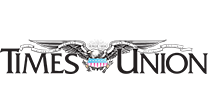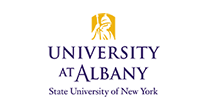News
June 24, 2015New York State Mesonet Seeks Sites for Its Growing Statewide Weather Network
ALBANY, N.Y. (June 22, 2015) – The New York State Mesonet has launched a search to identify viable sites for its statewide network of advanced surface weather stations.
Designed, developed, and hosted by the University at Albany’s internationally recognized weather and climate science research faculty, the NYS Mesonet weather detection system comprises 125 interconnected surface stations throughout the state. This network will address weather-gathering at both the surface and atmospheric levels and provide extensive, high-resolution, 3-D data and analyses to weather forecasters and emergency management decision-makers, so they can better plan for and mitigate extreme weather events.
Roughly half of the NYS Mesonet’s 125 station sites have been identified. UAlbany is now seeking permanent locations to complete the site selection process.
The Birth of the NYS Mesonet
In his 2015 State of the State address, Governor Andrew M. Cuomo announced the plans for the $23.6 million NYS Mesonet initiative, which is supported by New York State Department of Homeland Security and Emergency Services.
Studies over the past decade show recent trends toward more extreme precipitation in the northeastern United States including New York State, suggesting an increasing vulnerability. Over the past three years alone, New York has responded to Hurricanes Irene and Sandy and Tropical Storm Lee by strengthening and improving the State’s resilience to extreme weather events.
The NYS Mesonet promises a new generation of local weather observations that will support more accurate, more precise decision-making in agriculture, emergency management, energy, ground transportation and aviation. For example, localized soil moisture and temperature data will improve irrigation efficiency, and various pest models will be much improved with more local data inputs.
The 125 stations of the system will be located an average 20 miles from each other, reporting and capturing high resolution real-time and spatial data every 5 minutes. In addition, as many as 17 super sites will be equipped with profiler technology to gather above-ground meteorological observations to support more accurate forecasting.
Each standard site consists of a 30-foot tower centered within a 33-by-33-foot plot of land. Most enhanced sites will consist of a 30-foot tower centered within a 50-by-50-foot plot and a few enhanced sites may have a 100-foot tower centered within a 100-by-100-foot plot. To ensure the highest quality of data, each station must be at least 300 feet from any tall obstacles — trees and buildings — or potential heat sources such as pavement. Each site will be solar powered, self-sufficient and permanent.
Currently the National Weather Service’s offices in New York rely on a limited 27 automated surface observing system (ASOS) stations deployed across the state to measure weather events. However, the ASOS network does not provide the necessary high resolution data needed to support monitoring and predictive modeling of mesocale weather events (intermediate size meteorological phenomenon, usually less than 625 miles in horizontal range) and emerging weather-related risks, including rainfall and floods, heavy snow and ice, and high winds.
The system will be implemented in phases over the next 18 months. Once completed, emergency managers will be better informed, prepared and equipped to make decisions and deploy resources to protect life and property during extreme weather events.
The University at Albany will assume expenses associated with installation and maintenance of each station. Anyone interested in hosting a site, please contact Mesonet Program Director Dr. Jerald Brotzge.
Educationally and culturally, the University at Albany-SUNY puts “The World Within Reach” for its more than 17,300 students. An internationally recognized research university with 118 undergraduate majors and minors and 138 graduate programs, UAlbany is a leader among all New York State colleges and universities in such diverse fields as criminal justice, information science, public administration, social welfare, business and sociology. With a curriculum enhanced by 500 study-abroad opportunities, UAlbany launches great careers. Visit UAlbany’s extensive roster of faculty experts.
























